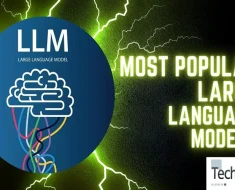In today’s fast-paced digital world, understanding customer emotions is more crucial than ever. That’s why it’s cool that we have AI emotion recognition tools that analyze facial expressions and voice patterns to gauge human feelings.
This technology is transforming customer service interactions, marketing strategies, and even mental health support.
Let’s talk about how emotion recognition AI is changing the game and the ethical considerations that come with it.
What is Emotion Recognition AI?
Emotion recognition AI, also known as emotion detection AI, uses advanced algorithms to analyze human emotions. These systems can interpret facial expressions, vocal tones, and body language to identify feelings like happiness, sadness, anger, or surprise.
This technology relies on machine learning models trained on vast datasets of human expressions and voice samples.
How AI in Emotion Recognition Works
1. Data Collection
The first step in AI emotion recognition is gathering data. This data can come from various sources, including:
- Facial Expressions: Cameras capture facial movements and expressions.
- Voice Tone: Microphones record speech, capturing nuances in tone and pitch.
- Physiological Signals: Sensors measure heart rate, skin conductivity, and other biometric data.
- Text Analysis: Text data from emails, social media, or chats is analyzed for sentiment and emotional cues.
2. Preprocessing
Once the data is collected, it undergoes preprocessing to ensure it is clean and suitable for analysis. This involves:
- Noise Reduction: Removing background noise from audio recordings.
- Normalization: Standardizing data formats and scales.
- Segmentation: Dividing data into manageable segments for analysis, such as breaking down speech into phonemes or text into sentences.
3. Feature Extraction
Feature extraction is the process of identifying and isolating specific characteristics within the data that are indicative of emotions. For different types of data, this involves:
- Facial Data: Identifying key facial landmarks such as eyes, mouth, and eyebrows to analyze movements and expressions.
- Voice Data: Analyzing pitch, tone, volume, and speech patterns.
- Text Data: Detecting sentiment, emotional keywords, and contextual cues.
- Physiological Data: Monitoring changes in heart rate, skin temperature, and other biometric indicators.
4. Machine Learning Models
Emotion recognition AI relies heavily on machine learning models trained on large datasets of annotated emotional data. These models include:
- Convolutional Neural Networks (CNNs): Used primarily for analyzing visual data such as facial expressions.
- Recurrent Neural Networks (RNNs): Effective for sequential data like speech and text, capturing temporal patterns.
- Support Vector Machines (SVMs): Often used for classification tasks, including distinguishing between different emotional states.
5. Emotion Classification
Using the extracted features, the machine learning models classify the data into specific emotional categories. This can include:
- Basic Emotions: Happiness, sadness, anger, fear, surprise, and disgust.
- Complex Emotions: Frustration, excitement, boredom, and confusion.
6. Real-Time Processing
For applications requiring immediate feedback, such as customer service or interactive experiences, AI systems process and analyze data in real time. This involves:
- Continuous Data Streaming: Constantly receiving and analyzing new data inputs.
- Instantaneous Analysis: Quickly processing and classifying emotional states to provide immediate responses.
7. Output and Interpretation
The final step involves presenting the results of the emotion recognition analysis in a usable form. This could be:
- Visual Displays: Graphs, charts, or dashboards showing emotional trends and insights.
- Automated Responses: Systems adjusting interactions based on detected emotions, such as a virtual assistant responding sympathetically to frustration.
- Data Reports: Detailed reports for further analysis, often used in research or business intelligence.
Applications of AI in Emotion Recognition
1. Customer Service Improvement
Emotion recognition AI helps businesses understand customer sentiments during interactions. By analyzing facial expressions and voice tones, companies can tailor their responses to better meet customer needs.
For example, if a customer appears frustrated, the AI can alert the service representative to address the issue more empathetically.
2. Marketing and Advertising
Emotion detection AI can be used to analyze audience reactions to advertisements in real time. Marketers can understand how viewers feel about certain content and tweak their strategies to better resonate with their target audience.
3. Mental Health Support
AI emotion detection tools are being used in mental health apps to monitor users’ emotional states. These apps can provide real-time feedback and suggest coping strategies when they detect signs of stress or depression.
Top AI Tools for Emotion Recognition
Affectiva

- Features:
- Specializes in emotion recognition through facial expression analysis.
- Uses machine learning to detect a range of emotions, including joy, anger, surprise, and sadness.
- Offers real-time emotion tracking and detailed analytics.
- Use Case:
- Automotive Industry: Monitors driver attention and emotional states to enhance road safety.
- Marketing: Gauges audience reactions to advertisements and media content, providing valuable insights for campaign optimization.
Kairos

- Features:
- Offers facial recognition and emotion analysis.
- Detects emotions from facial expressions and matches them to a database of known faces.
- Provides robust analytics and integration capabilities with other systems.
- Use Case:
- Security: Enhances identity verification processes with emotion detection.
- Marketing: Analyzes consumer behavior and emotional responses to products and advertisements.
Realeyes

- Features:
- Analyzes video content to detect viewer emotions in real time.
- Uses AI to interpret facial expressions and emotional responses.
- Provides detailed reports and insights on emotional engagement.
- Use Case:
- Advertising: Measures the emotional impact of ads and optimizes content for better engagement.
- Content Creation: Understands audience reactions to improve the quality and effectiveness of media.
IBM Watson Tone Analyzer
- Features:
- Analyzes text to detect emotional tones.
- Identifies emotions like joy, fear, sadness, and anger in written communication.
- Offers integration with various communication platforms.
- Use Case:
- Customer Feedback Analysis: Provides insights into customer sentiments in reviews and feedback.
- Content Creation: Helps tailor messages and content to resonate emotionally with the audience.
Microsoft Azure Emotion API

- Features:
- Provides facial emotion recognition in real-time.
- Analyzes facial expressions to detect happiness, sadness, and surprise.
- Integrates easily with various applications and services.
- Use Case:
- Interactive Applications: Enhances user experiences in gaming and virtual reality by responding to emotional cues.
- Customer Service: Improves service interactions by understanding customer emotions.
MoodMe

- Features:
- Offers real-time emotion detection for interactive applications.
- Analyzes facial expressions to provide emotional insights.
- Provides integration capabilities with various platforms and applications.
- Use Case:
- Entertainment: Enhances user interactions in games and virtual experiences by responding to their emotional states.
- Marketing: Understands consumer emotions to tailor marketing strategies and improve engagement.
Sightcorp

- Features:
- Provides facial analysis solutions for various industries.
- Detects emotions, age, gender, and other demographic data from facial expressions.
- Offers real-time analytics and reporting.
- Use Case:
- Retail: Gathers customer insights to improve the shopping experience and product placement.
- Security: Enhances identity verification and access control systems with emotion detection.
Viso.ai

- Features:
- Uses deep learning for visual emotion recognition.
- Analyzes facial expressions to detect emotions in real time.
- Provides comprehensive analytics and reporting.
- Use Case:
- Education: Monitors student engagement and emotional responses to improve learning experiences.
- Research: Studies human behavior and emotional patterns for scientific research.
| Tool | Features | Use Case |
|---|---|---|
| Affectiva | Facial expression analysis | Marketing, automotive industry |
| Kairos | Facial recognition and emotion analysis | Security, marketing |
| Realeyes | Video content emotion detection | Advertising, content creation |
| IBM Watson Tone Analyzer | Text emotion detection | Customer feedback, content creation |
| Microsoft Azure Emotion API | Real-time facial emotion recognition | Interactive applications, gaming |
| MoodMe | Real-time emotion detection | Interactive applications, entertainment |
| Sightcorp | Facial analysis solutions | Retail, security |
| Retail, Security | Deep learning for visual emotion recognition | Education, research |
The Ethics of AI Emotion Recognition
While AI offers numerous benefits in emotion recognition, it also raises ethical concerns. Privacy is a significant issue, as these systems often require access to personal data. Companies must ensure that data collection is transparent and that users have given informed consent.
Another concern is the potential for misuse. Emotion detection AI could be used to manipulate consumer behavior or invade personal privacy. It’s important to establish ethical guidelines and regulations to prevent abuse.
Real-Time Detection of Feelings in Video Using AI
Real-time detection of feelings in video using AI is particularly useful in areas like security, customer service, and entertainment. By analyzing live video feeds, AI can provide immediate feedback on the emotional state of individuals, allowing for prompt responses.
For instance, in customer service, real-time emotion recognition can help representatives adjust their approach to better satisfy customers.
The Bottom Line
AI is revolutionizing how we understand and interact with human emotions. From enhancing customer service to supporting mental health, the applications are vast and varied.
However, navigating the ethical landscape carefully is essential to ensure these technologies are used responsibly. As AI continues to evolve, its role in emotion detection and analysis will only grow, promising a future where understanding human emotions is more precise and impactful than ever before.
Cheers to creating more empathetic and responsive systems that cater to our emotional needs.
FAQs
1. Is there an AI that can detect emotions?
Yes, AI can detect emotions using advanced algorithms to analyze facial expressions, voice tones, and text data.
2. Can AI measure emotional intelligence?
AI can assess certain aspects of emotional intelligence by analyzing how people express and respond to emotions.
3. What is the role of AI in emotional intelligence?
AI helps in understanding and interpreting human emotions, enhancing communication, and improving interactions in various settings.
4. What are the benefits of AI emotion recognition?
AI emotion recognition offers several benefits:
- Improves Customer Service: By detecting customer emotions, companies can provide more personalized and effective support.
- Enhances User Experience: AI can adapt interactions based on user emotions, making them more engaging and satisfying.
- Supports Mental Health: AI tools can monitor emotional well-being and provide timely interventions.
- Aids in Education: Educators can use AI to understand student emotions and tailor their teaching methods accordingly.





